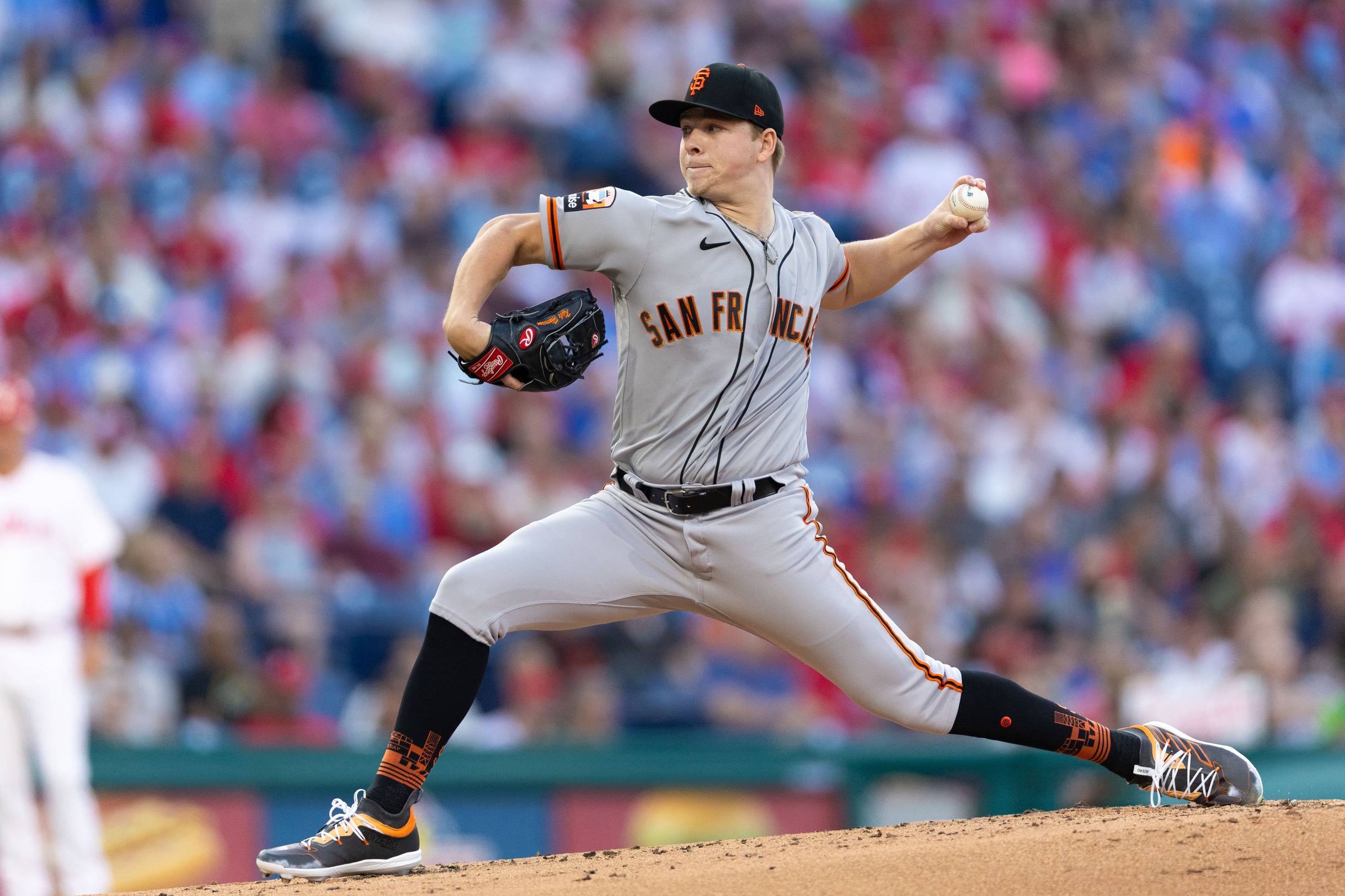Does SF Giants LHP Kyle Harrison already have MLB's most dominant fastball?

It's no secret that the SF Giants have had high expectations for left-handed pitcher Kyle Harrison (Giants Top Pitching Prospect) for a long time. Last October, Giants president of baseball operations Farhan Zaidi said he expected Harrison to reach the majors this year, even though he had not yet pitched above Double-A. Well, Harrison showed fans exactly what he's capable of in a historic Oracle Park debut on Monday when he struck out 11 hitters across 6.1 shutout innings against the Cincinnati Reds.

"It was about as electric a performance by a pitcher since I've been here in San Francisco." manager Gabe Kapler told reporters following the game.
Harrison's dominant overall line obviously got the bulk of attention. His double-digit strikeout total put him in the record books alongside Shohei Ohtani and Madison Bumgarner. His breaking ball was far more consistent than in his debut against the Phillies, and he increased the use of his changeup. But Harrison electrified the ballpark with his fastball.
"It was impressive," Reds manager David Bell told reporters on Monday night. "One of the best fastballs I've seen in a long time. I know he's young and just starting out, but first time we've seen him live and tough not to be impressed with what he was able to do, especially the fastball."
Harrison has thrown his fastball 69.9% of the time in his first two MLB starts, a nearly unparalleled rate in an era of increased breaking ball and offspeed pitch usage. MLB hitters have averaged a 33.9% whiff rate against sliders this season, hitting just .215 with a .353 slugging percentage. When facing four-seam fastballs, their whiff rate has dropped to 22.3% with a .246 average and .438 slugging. Yet, Harrison's reliance on the heater has not translated into struggles.
Opposing hitters have swung-and-miss against Harrison's fastball on 39.1% of swings. When they have connected against the heater, opponents are hitting just .160 (.143 xBA) with a .240 slugging percentage (.234 xSLG).
"He can probably never throw the fastball enough," said rookie Giants catcher Patrick Bailey. "It's that good of a pitch."
"The funny part is I think everybody's like kinda shocked. Like, 'Oh man, wow. This is incredible.' I've been seeing it for three years."
Harrison's fastball was overpowering hitters to a similar degree at Triple-A. Since the start of May, Harrison made 14 starts in the Pacific Coast League at Triple-A. He threw his fastball 583 times (more than 63.6% of his total pitches) and recorded a 39.5% whiff rate and 35.7% CSW% (Called Strike% + Whiff%).
It's always difficult to gauge what aspects of a prospect's performance will translate to the major leagues. But given the hitter-friendly environments throughout the Pacific Coast League and an ABS system that has seemed even tighter in Sacramento than elsewhere, Giants pitching prospects may have a unique advantage adjusting to the majors.
Entering Friday, Harrison was among six pitchers who have thrown double-digit innings in both the majors and at Triple-A Sacramento this season (Ryan Walker, Tristan Beck, Sean Hjelle, Mauricio Llovera, and Keaton Winn). Even after removing Harrison, the remaining pitchers have an average ERA, FIP, and xFIP at Triple-A (3.96, 5.38, and 5.05), that is arguably worse than in the majors (4.45, 4.25, and 4.16).
"Again, that's what makes this unusual," Kapler said. "I was thinking about some Carlos Rodón outings from last year, and he's got an 80-grade fastball, fastball that can miss bats in the zone that can miss right-handed bats in the middle of the zone. This was right there with him. It's that level of fastball. I don't want to get too over the top here, but it was as good as any fastball we've seen all year."
Rodón is one of the few starting pitchers left throwing a fastball more than 60% of the time. Yet, even his fastball only held opposing hitters to a 27.9% whiff rate, .213 average (.206 xBA), and .358 slugging (.347 xSLG) during his career year with the Giants last season.
Atlanta's young righty Spencer Strider has been one of the most dominant power pitchers in the league since he debuted in 2022. His fastball only has a 30.0% whiff rate, with opponents managing a .251 average (.238 xBA) and a .423 slugging percentage (.426 xSLG).
What about Jacob deGrom's signature fastball? Even in the pandemic-shortened 2020 season, opponents swung-and-miss on 36.8% of swings against deGrom's fastball and managed a .186 average (.196 xBA) and .320 slugging (.338 xSLG).
No starter has recently had a more dominant season with a four-seam fastball than Luis Castillo in 2022. Opposing hitters whiffed on 33.7% of swings and managed to hit just .152 (.180 xBA) with a .194 slugging (.281 xSLG). However, Castillo has always paired his four-seamer with a sinker. In 2023, he's begun throwing the four-seamer at the highest rate of his career (43.6%). It has remained elite but is far less dominant.
It's early, but what Harrison's fastball has done in two starts is something only elite relievers, like Félix Bautista, have ever managed to maintain. On one hand, that's probably reason to believe Harrison's fastball will regress a bit over a larger sample. On the other, even if it does, there are few starting pitchers in the league whose fastballs can approach his.
Kapler was obviously hesitant to be too absolute about what to expect from the young lefty down the stretch. After all, Harrison is barely 22 and is only two starts into what looks like a long MLB career. However, it rarely takes long to recognize greatness. It's too early to say Kyle Harrison will be the SF Giants' next homegrown ace, but if he is, it will likely be because his fastball is the best in the bigs.
